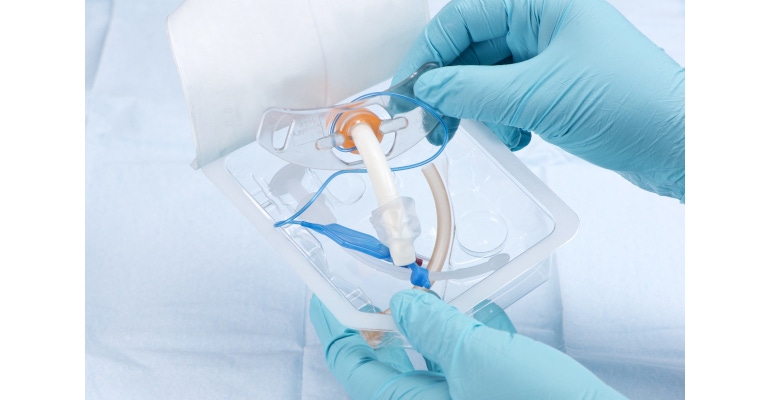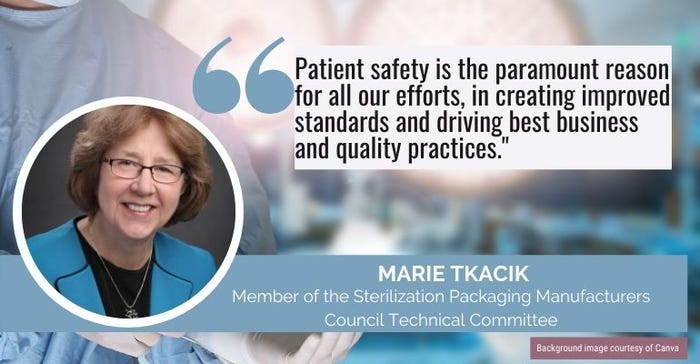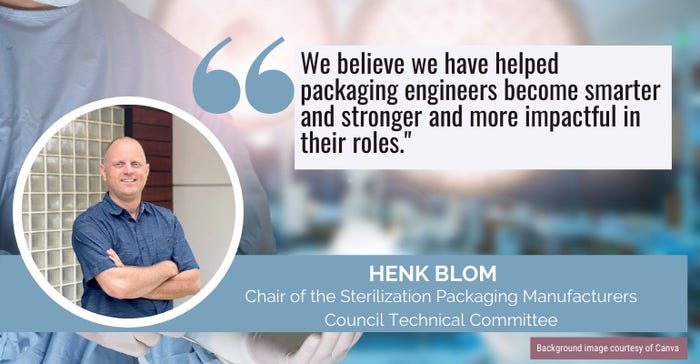March 2, 2021

March 10 is your chance to celebrate the role sterile packaging plays in healthcare and beyond. The date kicks off what organizers intend to be an annual tradition—Sterile Packaging Day. Conceived by the Sterilization Packaging Manufacturers Council (SPMC), Sterile Packaging Day highlights the efforts of packaging designers, sterilizers, and users who all work to ensure life-saving devices are sterile at point of use, SPMC explained here.
Sterile Packaging Day also provides the chance to recognize the SPMC and its ongoing efforts to develop sterile packaging standards and test methods as well as provide guidance and education.
“Patient safety is the key message behind Sterile Packaging Day,” Marie Tkacik, director of product development and optimization for Beacon Converters and a member of the SPMC’s technical committee, told MD+DI. “Patient safety is the paramount reason for all our efforts, in creating improved standards and driving best business and quality practices. Everything is geared toward the role that packaging plays in patient safety.”
Formed in 1994 through the Flexible Packaging Association, the SPMC “was a group of companies that came together because they had a commitment and they still do,” she continued. “One of the first orders of business was to identify a technical member from each company to meet and to focus on the subject of patient safety. We were tasked to do that through developing different test methods and taking a look at the gaps that were out there.” (The current member companies of the SPMC are Amcor, Beacon Converters, PAXXUS, PPC Flexibles, Printpack, and Technipaq.)
The SPMC has long played a role in developing such test methods for flexible packaging and “getting consensus,” Tkacik said, adding that its work has provided the foundation for many test methods through ASTM and other consensus standards organizations. Given their role in manufacturing flexible packaging, the SPMC member companies are focused on material science and on addressing some of the challenges in measurement, testing, and other potential issues in material converting, so they bring a unique perspective to ASTM’s broader membership.

“Initially when the SPMC started developing their own test methods, it actually published its own little booklet, and there’s still a few of those around,” said Henk Blom, VP of research and technology for PAXXUS and also the chair of the SPMC Technical Committee. “But at some point, there was a level of recognition that if we really wanted these to be more widely adopted, they needed to be part of a much bigger, much broader consensus-based organization. And that’s when the member companies of SPMC started sending representatives more regularly to ASTM meetings and then really transitioning those SPMC test methods into ASTM methods by going through a much broader and more rigorous approval process, with interlaboratory studies.”
Those included the dye penetration leak tests, ASTM F1929 (Standard Test Method For Detecting Seal Leaks In Porous Medical Packaging By Dye Penetration) and F3039 (Standard Test Method For Detecting Leaks In Nonporous Packaging Or Flexible Barrier Materials By Dye Penetration). “The dye penetration standards are important documents for integrity testing,” said Tkacik. “There is a wide variety of sensitivity levels in the many package integrity tests, and dye penetration is one of the better, easy-to-use, and least-expensive tests.”
And while ASTM F88 (Standard Test Method For Seal Strength Of Flexible Barrier Materials) dates back to 1965, the SPMC did play a role in enhancing the standard. “F88 didn’t have a precision and bias statement, and there were references to different techniques that could affect the outcome of testing but hadn’t been tested out,” Tkacik said. “So the SPMC coordinated testing at 18 different labs, developed all the samples to go out to those labs, did the full analysis of all that data as it came back, and created the F88 precision and bias statements. These results showed the effects when you use different techniques like supported 180 degrees or 90 degrees or just the unsupported free tail. [The work] opened up greater understanding of what could affect lab-to-lab agreement. This was actually the first document the SPMC worked on because it was the issue we found coming up most often in disagreement and confusion among customers.”
Another accomplishment was development of ASTM F2097 (Standard Guide For Design And Evaluation Of Primary Flexible Packaging For Medical Products). “The SPMC met with Earl Hackett of DuPont at the time and completely developed the standard,” said Tkacik. “That standard today has been expanded and redesigned, and it has evolved into a tremendous reference document that explains each test method, how it would be applied, and when it would be used for evaluation or for control of a process.”
Blom added that the SPMC also worked closely with ASTM on F99 (Standard Guide for Writing a Specification for Flexible Barrier Rollstock Materials), and ASTM F2559 (Standard Guide for Writing a Specification for Sterilizable Peel Pouches), with which Hal Miller was pretty closely associated. The SPMC technical committee is currently working on covering these two guides in two whitepapers, to be published on Sterile Packaging Day. Next up is supporting interlaboratory studies on F904 (Standard Test Method for Comparison of Bond Strength or Ply Adhesion of Similar Laminates Made from Flexible Materials) on bond strength measurement (measuring the interlayer adhesion between material layers), which Blom says the SPMC is “perfect for taking on that role,” since it is a standard that packaging converters would use.

The SPMC also helped develop guidance for ISO 11607, before it was more than an expectation. Working through ISO Technical Committee 198 Working Group 7, the SPMC attended meetings to develop the AAMI Technical Information Report on ISO 11607,” Tkacik said. “The SPMC took input from MDMs and different volunteer groups that came to the table and organized the entire document that would be called TIR 22. [We] basically created a body of the document based upon that input and edited annexes to bring greater clarity to different segments. TIR 22 would evolve to become ISO 16775, when the international organization decided that they wanted to adopt it and expand it for healthcare facilities.” As the SPMC/FPA regulatory standards representative on AAMI/ISO TC198 Working Group 7 on Packaging, Jackie Daly Johnson, president of Beacon Converters, headed the task force that developed ISO 16775 and served as cochair of the AAMI Working Group 7 and as a U.S. expert on the ISO Working Group 7, a role she continues to hold through the recent revisions of ISO 11607-1 and -2 and ongoing revision of ISO 16775, providing SPMC input throughout the development and approval process, Tkacik added.
SPMC has also worked to educate packaging engineers. “Over the past years, the SPMC worked on a series of webinars on ISO 11607, package integrity, sterilization, and materials,” said Blom. “We believe we have helped packaging engineers become smarter and stronger and more impactful in their roles as packaging engineers.”
The SPMC also maintains more than a hundred FAQs on its website, and the questions have been answered through consensus among SPMC members. Tkacik says that one of those FAQs, which covers material handling and storage, was recently turned into an infographic and shared on LinkedIn. “We are trying to utilize all the work we’ve built up over the years and make sure new engineers are exposed to it,” she said.
In addition, “we want engineers to ask questions—it could help us determine whether there is a gap in what standards are out there or what people need to know,” she added. “Change moves us forward in new directions and encourages us to think more creatively.”
One new challenge that Blom thinks the SPMC can help engineers tackle is addressing new expectations for sterile packaging in the EU MDR. In particular, the new regulation requires medical device manufacturers to design packaging that enables users to determine that the sterile barrier is still intact prior to aseptic presentation.
In the meantime, “Sterile Packaging Day will help packaging engineers—often the last ones to be called in on medical device development projects,” said Blom. “If the day more broadly communicates the message that packaging is critical and elevates packaging engineers in the product development cycle, that would be huge.”
For more details, be sure to see the Packaging Digest article featuring Dhuanne Dodrill, SPMC chair and PAXXUS CEO, "Inaugural Sterile Packaging Day Educates and Celebrates."
About the Author(s)
You May Also Like




